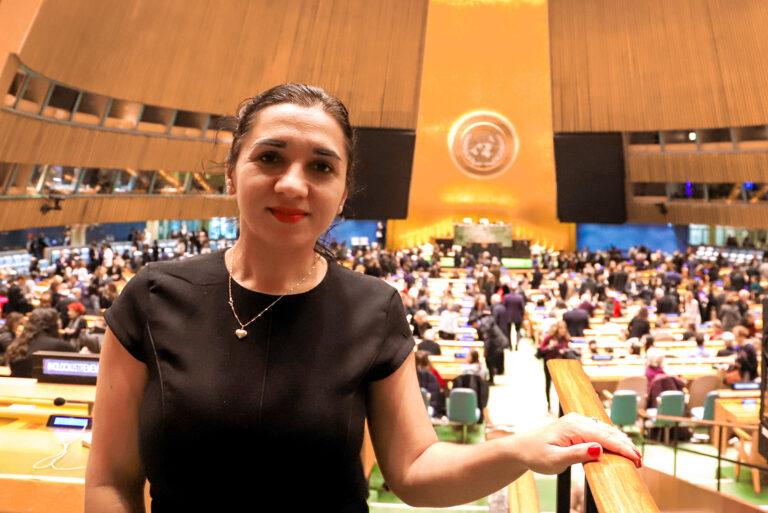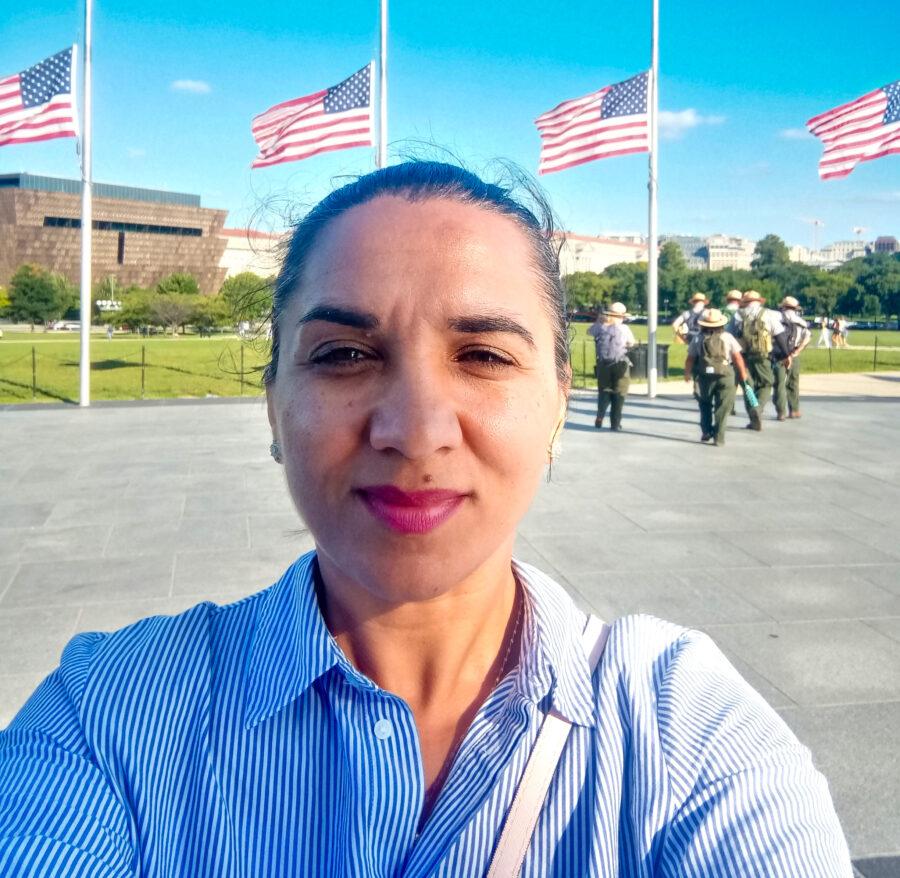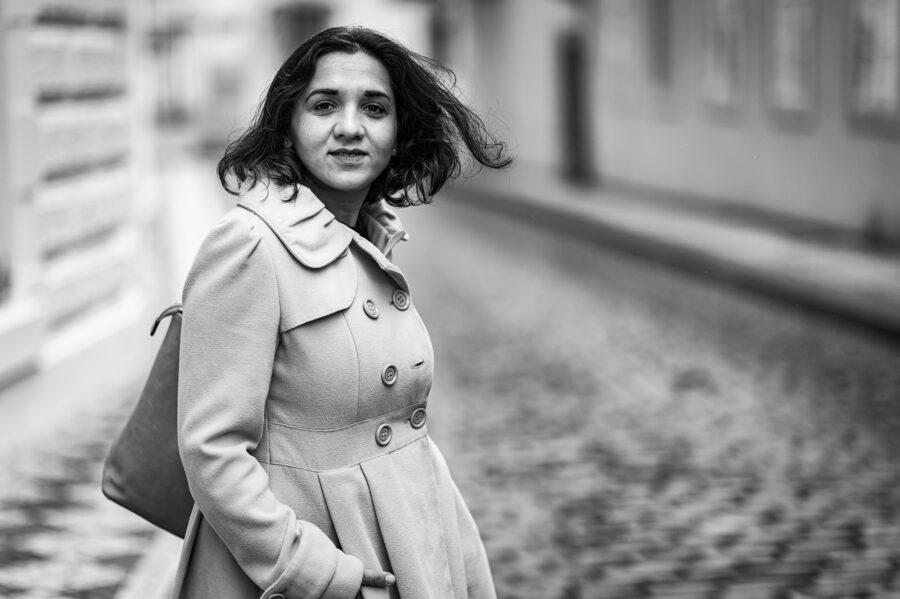Renata Berkyová, who is doing research at the United States Holocaust Memorial Museum: "In Czechoslovakia, Roma and Sinti survivors strove to commemorate the Holocaust even before 1989"

Renata Berkyová, a doctoral student at Charles University in Prague, Czech Republic with the Faculty of Arts' Institute of Economic and Social History, has recently been awarded the Randolph and Elizabeth Braham Fellowship from the United States Holocaust Memorial Museum in Washington, D.C. to perform her dissertation research on the subject of the communist-era formation of memories of the Holocaust of the Roma and Sinti in Czechoslovakia. "The project that I applied for this fellowship for is more or less the subject of my dissertation, I am interested in the development of perceptions of the Nazi genocide of the Roma and Sinti in Czechoslovakia after 1945. There's a bit of a stereotypical notion predominant among the public that any attempts to commemorate the genocide of the Roma during the war were suppressed by the communists, that the racial persecution and the tragic fate of a large part of the indigenous Czech Roma were displaced from the collective memory. In my research I try to demonstrate that the situation was more complex and, in some respects, even different from this widespread notion," she told news server Romea.cz.
In her research, the doctoral student is focusing on how, in Czechoslovakia, society-wide awareness of the genocide of the Roma was formed, how the experiences of Romani survivors of the war were reflected on at different levels, and how the state approached the issue of racial persecution, or whether such reflections can be observed in film and literature. “The most important line of my work is, of course, the position and activity of Romani and Sinti survivors, or their families. I am interested in which forms and formats their efforts to commemorate the victims took, as well as efforts to increase awareness across all of society about their devastating experiences of the Second World War. I am doing my best to view their efforts, whether they were individual initiatives – for example, the installation of memorial plaques, or as part of negotiating at the highest levels of politics – in their broader context,” she said.
The U.S. Holocaust Memorial Museum in Washington, D.C. protects an enormous number of archival documents, audio and video recordings, films, photographs and personal valuables donated by survivors and many others from various countries of the world, including the Czech Republic and Slovakia. It is one of the biggest archival collections in the world about this tragic time.
The activities and crucial role of Romani survivors
“One aspect is how this position was shaped from above through laws, orders, the setup of the state structures and censorship directives, and another is how the experience of the Holocaust was impressed onto the everyday lives of individuals and how they did their best, within the realm of possibility, to come to terms with that experience. What strategies and formats did they look for in the available conditions, not just the Romani survivors, but also the Jewish ones, when it came to public commemorations?” she asks about the widespread notion that the communist regime suppressed and made taboo the Holocaust of the Roma and Sinti.
As an example, the researcher mentions the short documentary film “Don’t Forget About That Little Girl” (“Nezapomeňte na toto děvčátko”)’, made by Miroslav Bárta in 1960 on the basis of photographs which were taken by a guard in the Lety concentration camp, on authentic footage of that same place in the 1950s, and on the memories of survivors in his wife’s family. “The documentary was censored, according to his wife, but ultimately a way was found to produce an approved version. It was then screened in the early 1960s in Czech cinemas as a short film before feature films and submitted to two international competitions for documentary films,” Berkyová said.
“Another example where the attitudes and perceptions of the genocide of the Roma overlap at different positions is Act. no. 255 of 1946, which made it possible for those who participated in the ‘national fight for freedom’ to access a certain amount of compensation in the form of higher old-age pensions and some other social benefits. One of the seven categories underneath which one could apply for this compensation was ‘political prisoner’, under which both Romani and Jewish survivors of the concentration camps applied beginning in the 1950s. However, in addition to many other people, Roma also applied as partisans and participants in the resistance. In those applications, it is interesting to trace how assessors at the Ministry of National Defense perceived the racial persecution of Romani applicants, as well as how the perception and assessment was influenced by the Union of Gypsies/Roma – which was the only officially-permitted organization of Roma, one that functioned briefly (1969-1973), but played a crucial role in the institutional representation of Romani applicants and the overall shift on the perception of the genocide of the Roma,” she revealed.

“These and other activities by Romani representatives, which understandably did not happen in isolation from the developments of Czechoslovak politics vis-à-vis what were called ‘citizens of gypsy origin’ and happened simultaneous to the thematization of the Second World War, reveal that the story about the suppression of Czech Romani Holocaust commemorations by the communists is too simplistic,” she has summarized for news server Romea.cz. “What’s more, they refute the still-widespread idea that the Roma themselves forgot about the Holocaust and failed to keep it alive in all of our memories. What I would call a stereotype of victimization about the Roma having no historical memory is naturally absolutely incorrect and reflects, in addition to biases, the big gaps in historical research, which rarely includes a Romani, non-homogenous perspective.”
Recognition of the Holocaust of the Roma and Sinti
Renata Berkyová is a graduate in Romani Studies from Charles University’s Central European Studies Department at the Faculty of Arts and has been working for the Academy of Sciences of the Czech Republic’s Institute for Contemporary History and its Prague Forum for Romani Histories since 2018. Researching the history of the Roma during the Second World War and its aftermath is her primary field of interest.
Her previous thesis researched the approach of the Czechoslovak state toward the Romani people imprisoned in what was called the “Gypsy Camp” at Lety u Písku who applied to be given certificates under Act no. 255/1946, Coll. of their racial persecution during the war. She has contributed to creating the exhibition for the new Lety u Písku Memorial of the Holocaust of the Roma and Sinti in Bohemia as a member of its working group and is a member of the editorial team of Romano džaniben, the journal of Romani Studies.

“My interest in the postwar period and recognition of the Holocaust of the Roma increased when I started taking more of an interest in the situation around removing the industrial pig farm from the site of the former concentration camp at Lety u Písku. In 2014 I joined a project of the ROMEA organization for beginning filmmakers and, with their supervision, I made the short documentary film Stíny romského holocaustu (“Shadows of the Holocaust of the Roma”), where I drew attention to this problem. In 2019, František Bikár, Viola Tokárová and I produced the hour-long documentary LETY, in which we did our best to capture the development of the debate on this issue in society starting in the 1990s. While studying the archival materials, including applications for compensation, and while searching for the context in which the industrial pig farm was built in the early 1970s, I gradually realized that we know very little about Czechoslovakia’s postwar period as it relates to remembrance of the Holocaust of the Roma and Sinti. We especially know very little from Romani people themselves,” she told Romea.cz.
Berkyová began her four-month research visit to Washington, D.C. this month.